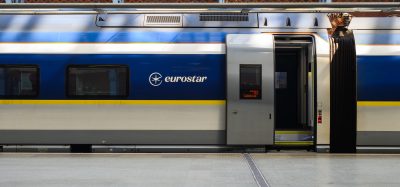Network Rail looks to reduce the cost of signalling through a data-driven right first-time approach
Posted: 2 August 2021 | Matt Weingarth | No comments yet
Matt Weingarth, Principal Innovations Engineer, shares details about how Network Rail’s Target 190plus programme is working with industry to develop and use data and tools for operational and design solutions in signalling. In this article, he explores how these technologies will speed up how we deliver and maintain the railway, improving overall experience for customers and employees.
Conventional signalling cannot be delivered sustainably due to the high cost, high volume, high resource, and disruptive access required, impacting the ability to serve customers effectively. We need to make signalling more affordable, and this means we need to do something different.
One of the ways Network Rail is looking to address this challenge is by automating the capture and use of data that feeds into design and asset management solutions, as well as testing and assurance processes. It is also essential that the information being captured and used is managed correctly and effectively to get the benefits we want and need from it. Therefore, it’s important to remember that all capabilities are underpinned by data management, which will help us improve data driven decision making. Our Future Control Command and Signalling (CCS) Data and Tool projects are a key enabler, providing opportunities to adopt a right first-time approach and allowing us to do things quicker, cheaper, and safer.
Christopher Koay, Principal Signalling Designer for VolkerRail, who has been involved with using data management tools for railway signalling enhancements and renewals, said: “Digital data will become more available for the signalling design process to analyse the infrastructure more efficiently. Therefore, centralised data management becomes essential to ensure consistency, accuracy and reliability of the digital data.”
How are design and operational processes on the railway done today?
There are many issues associated with the current manual design and operational processes and techniques that affect the quality and cost of what we deliver.


Future Control, Command & Signalling (CCS) Data and Tools for the operational railway – reducing costs through a data-driven right first time approach.
Our Target 190plus research and development programme is looking at how improvements in the way we capture, use and share data will change how we design and deploy, operate and maintain future control command and signalling for our railway. This will ultimately save time by building an aggregated, accurate, single source of the truth that can be accessed and used by Network Rail, operators and suppliers. It will also provide us with a more accurate understanding of our infrastructure, which will improve safety as well as increase efficiencies in operations and maintenance, by enabling a data-driven decision-making approach. This will help to reduce project timescales, while putting the engineer at the centre of the process.
When will tools be available for use in the operational railway?
…we are developing tools that can provide immediate improvements and efficiencies on schemes and for operation and maintenance activities.
Our Target 190plus programme is looking at a solution that supports the long-term sustainability of the railway as it moves to digital signalling. As part of this, we are developing tools that can provide immediate improvements and efficiencies on schemes and for operation and maintenance activities.
We have several tools which are ready for use in the operational railway with processes to support them, some that will be available within 12 months (subject to procurement/trials) and some currently in longer term development.
We are building on work that has already been done, within Network Rail and with suppliers, and developing this further with a focus on four areas:
- Data capture systems – using technology to recognise the presence of a variety of assets and capture relevant details accurately
- Visualisation tools – ability to see, review, assess and measure assets using survey data from video, laser and other sources
- Design and operational tools – ability to use data to create new schemes/incorporate existing infrastructure with real-time feedback on risk and performance
- Data management – creating consistent, up-to-date and centralised data available across disciplines with ability to manage changes and version control.
Examples of approved tools ready for use in the operational railway
An example of one of our data capture systems that is currently available and being successfully used in the operational railway is the Tail Lamp Camera (TLC+). TLC+ is a box that contains a camera and positional equipment and can be attached to the front of operational trains. It records the railway using video and GPS data to allow capture of asset features and positional data, which can support design and inspection.
The portable nature of TLC+ and its ability to run on in-service trains means it is rapidly deployable, easy to use and does not require line closure. Its enhanced positional accuracy also prevents outages and inaccuracies, allowing us to get a right first-time result and prevent the need for re-work.
The TLC+ has been used for Axle Counter positioning work in Cambridge. The AIVR system fed by TLC+, was used to place models on the footage to measure and survey positions for new Axle Counters, improving the accuracy of data and introducing map matching. This has also been used by Central Rail Systems Alliance (CRSA) where it has saved £20,000 so far, and the Bristol Area Signalling Renewal & Enhancement (BASRE). This is a great collaborative example of how Target 190plus are feeding into current systems and processes to enhance them.
Rich Coleman, Scheme Project Manager for Network Rail (BASRE), said: “One of the key benefits has been during hand back and review with Maintenance and Route Asset Managers – 120 miles of route would have been very difficult to walk with reps from all parties. By keeping people off track, we have improved safety and saved time and money.”
An example of our data sharing approach can be seen in the successful development and deployment of Application Programme Interfaces (APIs) for systems. An API allows different software programmes to interact so that information can be used by other tools without needing to physically access another programme or search for the information first; this enables less error and a consistent approach using automation to enable data driven decisions.


Application Programme Interfaces (APIs) allow different software programmes to interact so that information can be used by other tools without needing to physically access another programme or search for the information first.
APIs were created to allow information to be accessed and returned from the Signal Sighting Form Tool (SSiFT) databases by the Rail Safety and Standards Board (RSSB) to improve the quality of the information held on signals in their Safety Management Intelligence System (SMIS) database.
Alex Gilchrist, Data Scientist for RSSB, said: “We used the SSiFT API to investigate whether the data contained within it could be used to improve the accuracy of safety incidents reported in SMIS. The API was easy to use, and it provided a relatively straightforward way for us to access the data we needed.”
Is success based on the technology alone?
While we are developing tools to use, our solutions are not just about technology. If we are going to address the issues associated with the current processes and techniques, we need to adopt a whole system thinking approach which considers the accuracy of information, the processes of how we use it and the people using it, as technology cannot achieve this change on its own.
If we are going to address the issues associated with the current processes and techniques, we need to adopt a whole system thinking approach.
This approach contributes to easy access and sharing of data and goes on to make a step-change in reliability, availability, and whole-life cost for new assets. These are two goals in the industry’s Rail Technical Strategy for the railway to be data-driven and reliable and easy to maintain.
To successfully implement these new technologies, Network Rail and Industry business and people change will be needed. As part of this, we are developing tools that can provide immediate improvements and efficiencies on schemes and for operation and maintenance activities.
What is Target 190plus?
Target 190plus is a Network Rail research and development programme that looks at the sustainability of the signalling systems on the network and the challenges these bring to the rail industry by creating new ways of working and introducing new technology.
It has the aim to reduce the current whole life cost of signalling, improve services for passengers and increase safety by automating signalling design processes, standardising railway system architectures, implementing faster renewals planning and introducing offsite testing and validation processes.









